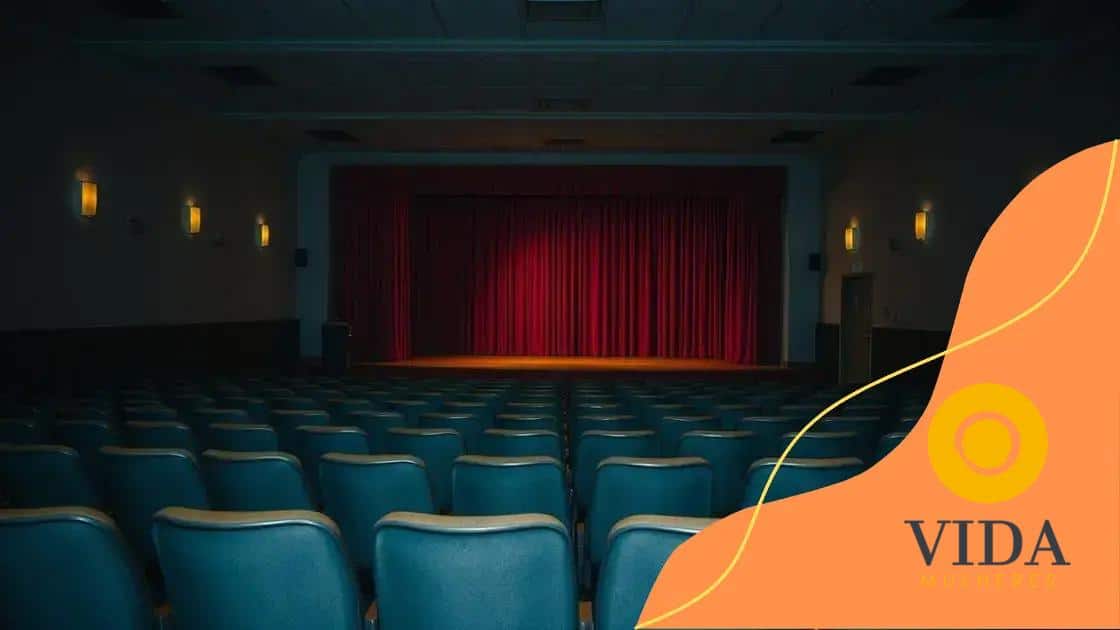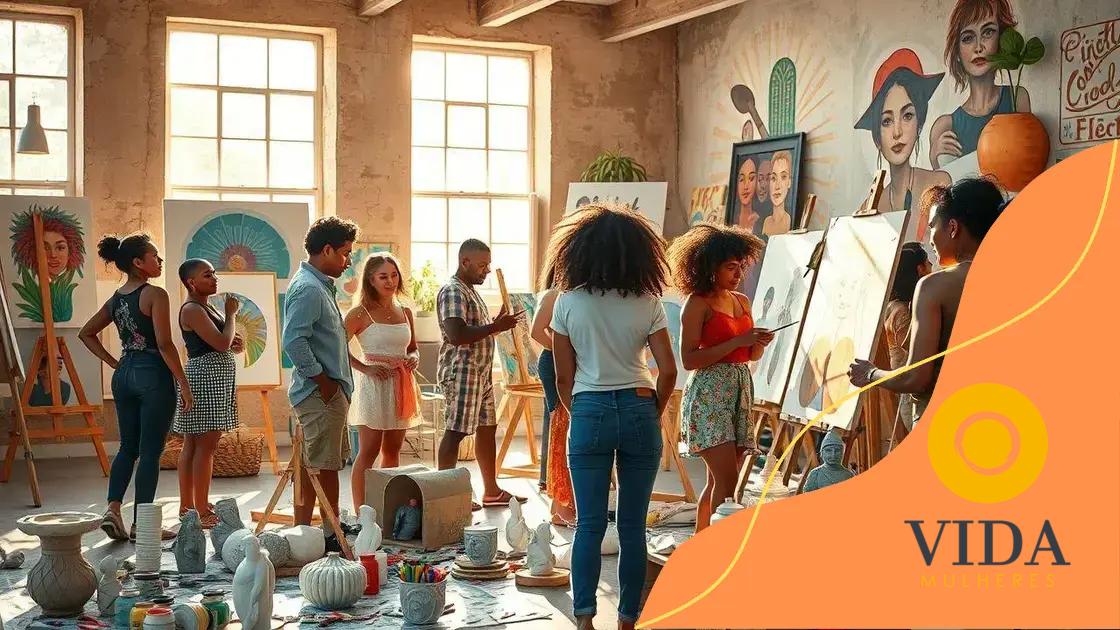Decline in arts funding raises equity questions

The decline in arts funding raises equity questions as marginalized communities often lose access to artistic opportunities, highlighting the need for innovative solutions and alternative funding sources to ensure inclusivity in the arts.
Decline in arts funding raises equity questions that touch every corner of our communities.
As artists struggle to secure support, how does this issue shape the cultural landscape we live in? Let’s dive into the implications of these cuts.
Understanding the impact of funding cuts
Understanding the impact of funding cuts is essential for grasping the overall health of the arts community.
When funding cuts occur, they affect not just artists but entire communities. These cuts can lead to fewer programs, less access to arts education, and diminished public spaces for creativity.
The ripple effect can be profound. Without adequate funding, organizations struggle to maintain programming, which can create gaps in cultural education.
As funding decreases, it raises questions about who gets to participate in the arts.
The Immediate Effects of Funding Cuts
In the short term, funding cuts can lead to:
- Reduced programming options for local communities.
- Layoffs or reduced hours for artists and staff.
- Increased ticket prices, making arts less accessible.
- Fewer community events that engage the public.
These immediate changes can create a sense of loss in the community, as arts events and local productions often provide a sense of connection and identity.
Long-Term Consequences for Arts Institutions
Over time, the consequences of reduced funding can escalate. Institutions may:
- Struggle to attract new talent due to budget constraints.
- Be forced to eliminate innovative projects that connect with underrepresented groups.
- Experience a decline in public interest, leading to reduced attendance.
- Turn to crowdfunding or donations, which can be unpredictable.
As funding cuts continue, arts institutions may find it increasingly difficult to fulfill their missions, leading to a narrower focus that excludes diverse voices.
Addressing the impact of these cuts requires community engagement and innovative thinking.
Working together, communities can advocate for better funding policies and create alternative resources to support the arts.
This collaboration is essential in ensuring that art remains a vital part of our cultural landscape.
Equity issues in arts access

Equity issues in arts access are crucial to understanding how everyone experiences culture. When funding cuts occur, they disproportionately affect marginalized communities.
This can lead to fewer opportunities for underrepresented groups to engage with the arts.
Many people may not realize how deeply rooted these issues are. Access to art should be a right, not a privilege.
However, financial barriers often restrict participation, leaving many without the opportunity to explore their creativity.
Barriers to Accessing the Arts
There are several challenges that hinder equitable access to the arts:
- Limited funding for community programs in low-income areas.
- Lack of transportation options to reach art venues.
- High costs associated with art supplies and classes.
- Insufficient representation of diverse cultures in mainstream arts.
Each of these barriers plays a role in limiting participation in the arts. Communities must recognize these challenges to address them effectively.
The Importance of Inclusive Arts Programs
Inclusive arts programs can bridge the gap in accessibility. By providing resources and opportunities, these programs allow individuals from all backgrounds to participate.
Benefits include:
- Fostering creativity among underrepresented groups.
- Building community through shared artistic experiences.
- Encouraging diverse perspectives in artistic expression.
- Creating pathways for future generations in the arts.
Investing in inclusive programs promotes a richer cultural landscape. It’s essential for everyone to have a voice in the arts, ensuring a broad spectrum of stories is told.
By prioritizing equity in arts access, communities can create environments where creativity flourishes. This not only benefits artists but enriches society as a whole.
Community responses to arts funding decline
Community responses to arts funding decline reveal much about how neighborhoods value culture.
When funding is cut, communities often come together to find creative solutions. These responses are essential for preserving the arts and making them accessible.
People recognize the importance of arts in their lives. They often feel a strong need to advocate for continued support.
Community members may organize around this issue, pushing for changes that can address the decline.
Grassroots Initiatives and Advocacy
Many communities engage in grassroots initiatives to counteract funding cuts. These efforts often include:
- Petitions to local governments for increased funding.
- Community events to raise awareness and funds.
- Collaborations with local businesses to sponsor arts programs.
- Workshops that connect artists with community resources.
Grassroots movements create a platform for voices that might otherwise go unheard. They build a sense of ownership and pride in local arts.
The Role of Social Media
Social media also plays a significant role in organizing community responses. Many groups utilize platforms to:
- Spread awareness about funding issues.
- Share success stories of arts programs.
- Encourage public participation in arts events.
- Mobilize supporters quickly in times of need.
Through social media, communities can rally support and educate others about the importance of arts funding.
Engaging discussions online can lead to stronger community ties and support for local artists.
Ultimately, community responses to funding declines show resilience and creativity.
By banding together, residents can ensure that arts remain a vital and accessible part of their lives.
These efforts highlight the value people place on the arts and their determination to sustain cultural expression regardless of financial hurdles.
Exploring alternative funding sources
Exploring alternative funding sources is increasingly vital as traditional arts funding declines. Organizations are searching for innovative ways to support their programs.
These alternative strategies can ensure the arts thrive despite financial challenges.
Many artists and organizations are turning to partnerships and community support to fund their projects.
This approach not only provides financial backing but also builds a stronger connection between the arts and the community.
Types of Alternative Funding Sources
Some effective alternative funding sources include:
- Crowdfunding: Platforms like Kickstarter and GoFundMe allow creators to raise small amounts from many people.
- Grants from non-traditional foundations: Organizations focused on social impact often support arts initiatives that promote equity.
- Corporate sponsorship: Businesses may sponsor local arts events as part of their community engagement efforts.
- Membership programs: Creating a subscription model can provide steady income while fostering a community of supporters.
These alternatives can provide the resources needed to maintain creative expression. They also encourage more engagement from the public, which can enhance community ties.
The Role of Community Engagement
Engaging the community is crucial for successful fundraising. When people feel connected to the arts, they are more likely to contribute.
Events like local art fairs or workshops can serve as means to raise funds while promoting local talent.
Emphasizing the role of volunteers can also build a support network around artistic projects.
Volunteers can help with everything from planning events to marketing initiatives, reducing costs and increasing impact.
As communities explore these alternative funding sources, they can foster resilience in local arts ecosystems.
With creativity and collaboration, it’s possible to maintain vibrant arts scenes that reflect and enhance community values.
Future of arts funding and equity
The future of arts funding and equity is a pressing issue that demands attention. As public funding decreases, it becomes essential to explore new ways to ensure that all communities have access to the arts.
This challenge is not just about finances; it’s about fostering creativity and expression across diverse populations.
Looking ahead, arts funding must evolve to meet the needs of modern communities.
Collaboration between cultural institutions and local governments can lead to more equitable distribution of funds.
By prioritizing marginalized voices, we can build a more inclusive arts landscape.
Emerging Trends in Arts Funding
Several trends are shaping the future of arts funding:
- Increased crowdfunding: Many artists are turning to platforms like Patreon to gather support directly from their audiences.
- Focus on social impact: Foundations are increasingly supporting arts initiatives that promote social change and community wellness.
- Hybrid funding models: Organizations are combining grants, sponsorships, and public support to diversify their income sources.
- Technology integration: Digital platforms are making it easier for artists to connect with their supporters and share their work.
These trends reflect a shift in how arts organizations operate. They must be adaptable and open to new models of support while ensuring equity remains a top priority.
Ensuring Equity in Future Funding
Ensuring equity in arts funding requires intentional planning. Incorporating community input into funding decisions helps to prioritize the needs of those most affected by funding cuts.
Regular dialogues with local artists and leaders can guide funding strategies to better reflect community values.
Moreover, it is vital to create funding criteria that actively seek to support underrepresented groups.
This can involve offering grants specifically for minority artists or community-based projects that engage diverse populations. By listening to those voices, we lay the foundation for a more equitable future.
As we look to the future of arts funding and equity, it is clear that innovative approaches and community-centered strategies will be crucial.
The commitment to inclusivity and accessibility will define how the arts evolve and thrive in the coming years.
FAQ – Questions about the Future of Arts Funding and Equity
What are some alternative funding sources for artists?
Artists can explore crowdfunding platforms, grants from non-traditional foundations, corporate sponsorships, and community-based membership programs.
How can communities engage in arts funding decisions?
Communities can hold discussions, workshops, and forums to gather input from local artists and residents, ensuring diverse voices are heard in funding decisions.
Why is equity important in arts funding?
Equity ensures that all communities, especially underrepresented groups, have access to artistic opportunities, enriching the cultural landscape for everyone.
What role does technology play in arts funding?
Technology facilitates crowdfunding and enhances communication between artists and supporters, making it easier to share projects and gather financial support.






